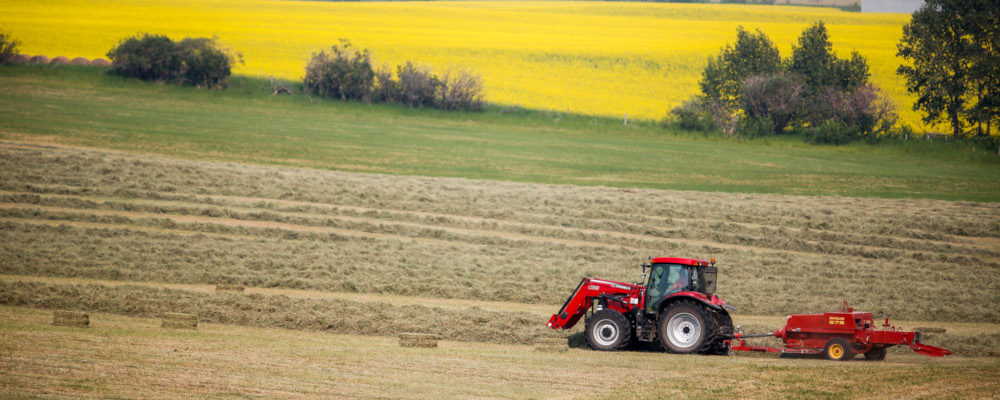Since 1867, Canadian agriculture has been one of two areas of joint federal-provincial-territorial jurisdiction. This has been both a blessing and a curse.
For most of that time, the two levels of government struggled with how to make the relationship work. Those struggles led governments to agree to the first Agriculture Policy Framework (APF) in 2003.
Almost 20 years later, the time has come to ask how the federal-provincial-territorial (FPT) policy framework can become a more strategic tool to support the agri-food system—a system that is responsible for one in eight Canadian jobs, seven percent of Canada’s GDP, $70 billion in exports, and is an essential tool in the fight against climate change.
The APF addressed concerns about program inconsistencies and inequities in federal spending across producers, regions, and commodities through five-year funding agreements.
But while the APF created stability, certainty, and relative equity, it should be properly characterized as a spending agreement. Governments themselves refer to it as a “$3 billion five-year investment.” The approximately $8 billion spent on business risk management programs over the agreement is an additional “investment.”
What the current agreement is not is a policy framework, in as much as one would expect a policy framework to define policy objectives or goals, a strategy through which to meet goals, and to generate programming solutions that implement a policy. These are important gaps and represent missed opportunities.
It is important to acknowledge the significant policy work and development that does go into the APF process. Across the country there are hundreds of officials that dedicate part or all of their time to the process. Ministers meet multiple times a year to offer political direction. Farm groups and other stakeholders engage in consultations and offer recommendations.
However, there are limitations to the status quo. Without a clear strategic element to the process, the renewal of five-year agreements ends up with high-level objectives such as “growing trade,” “advancing science and innovation,” and “supporting public trust.” Changes are biased toward tweaks or minor variations to the existing programming set, or, conversely, any significant changes are spread across broad programming areas, often driven more by tightening budgets than by changes in strategic direction.
A deep analysis and consultation should guide the renewal of a multi-billion dollar five-year agreement. This analysis should focus on the challenges and opportunities facing Canada’s agri-food system, including how its position, international customers, and competitors have changed. Not to mention how stakeholders’ preferences and aspirations—including farmers, processors, and consumers—have evolved. The analysis should be made public and be consulted on. It should also include a clear set of objectives, with targets, by which performance can be assessed and accountability encouraged.
The expectations for agriculture and food have never been greater.
The agri-food system would benefit from a renewed approach that builds on the existing spending agreement. A first step would be to have FPT governments develop terms of reference to establish a more strategic agenda to guide the current funding agreement.
This process should articulate objectives, again with measurable targets for the coming five years, a strategy for achieving them, and analysis/consultation of policy alternatives with programming concepts. The outcomes could then be reviewed and renewed through a public process.
The expectations for agriculture and food have never been greater. The time is right to make the existing framework more ambitious and transparent with agri-food policy development. Governments have set targets for exports and domestic sales, greenhouse gas emission reduction and biodiversity, food security, and more. The risks facing the sector, from erratic international market access and farm prices, increasing input costs, and shifting weather extremes have never been greater. The pressure to obtain new and renewed investment in agri-food processing is sobering.
In certain ways, governments have benefited from changes brought on by the pandemic. The business-as-usual approach was replaced by a need to get things done. In agri-food, for instance, long-standing barriers to both interprovincial meat trade and access to the international workforce critical to Canada’s domestic food supply were overcome by necessity.
No single level of government is responsible for turning these challenges into opportunities, and no single level of government can act independently. Therefore, FPT governments need to continue with a collaborative, solution-oriented mindset to deliver a genuinely national agri-food policy that can drive the public and private investments necessary for the agri-food system to thrive.
Canada experienced 150 years of challenging agri-food policy development. The APF was a step in the right direction. Now almost 20 years later the time has come to take another step forward and make the APF a true, and truly ambitious, policy framework.
On November 15, CAPI will host a webinar to take the pulse of the FPT relationship, agriculture’s most underappreciated relationship. Find more here.




